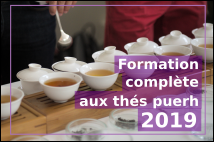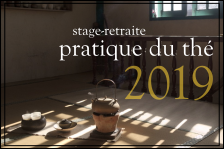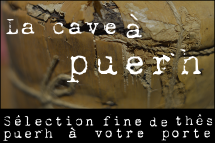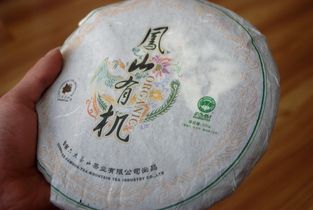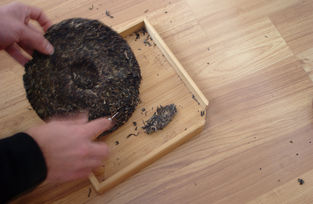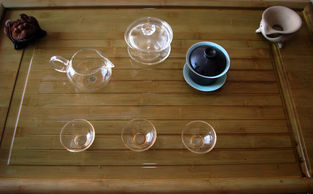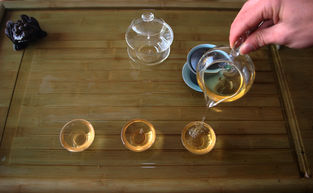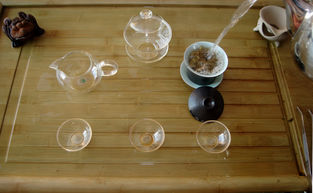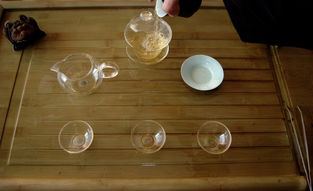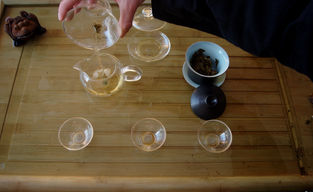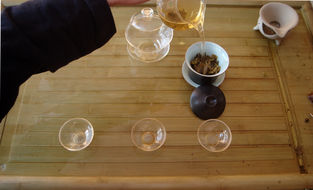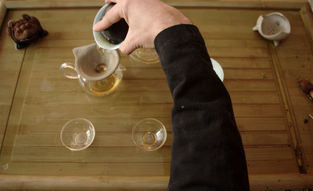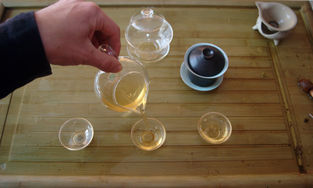 This page is not a real translation but just an automatic translation generated by computer of the original article, written in French language! Its not good... but better than nothing!
This page is not a real translation but just an automatic translation generated by computer of the original article, written in French language! Its not good... but better than nothing!Want to help us do diffuse puerh tea culture in english, by providing a better (or corrected) translation?
Please contact us!

After basic article on general practice Gung Fu with a Gaiwan , here's an article a little longer upon the infusion of young puerh (Pu Er tea) gross.
The Gung Fu is indeed not only in a specific formula and fixed but precisely in the adaptation and subtle variation of the infusion depending on the character of the tea is prepared, and there are many including how to handle the Gaiwan.
While some, particularly in Hong Kong and Taiwan, swear by the old puerh (Pu Er tea) or fermented, raw puerh (Pu Er tea) be eaten young (green). This is particularly as it is consumed and appreciated in Yunnan and mainland China for several hundred years, and the young are probably a gross puerh (Pu Er tea) families puerh (Pu Er tea) richest, and which reflects the particular brand the soil.
The article on Gung Fu practice of using a Gaiwan describes perfectly how to infuse a young puerh (Pu Er tea) crude, and will suffice in most cases.
Generally the infusion of a young puerh (Pu Er tea) does not really effect differs from that of an old puerh (Pu Er tea) or tea wulong except the durations of infusions.
It is indeed crucial to appreciate a young puerh (Pu Er tea) crude as it should infuse the very short, beginning with the first infusion example 2 seconds or 3 seconds , or there is a commonly infuse puerh (Pu Er tea) aged, fermented, or wulong 20 to 30 seconds.
Many of those who were "shocked" by the puerh (Pu Er tea) crude, and have tea this family as overly bitter and totally undrinkable, it was actually by an infusion inadequate, in particular too long (and often also by a tea of poor quality, excessive bitterness).
Because first all puerh (Pu Er tea) crude are not bitter, far from it. Then some crude puerh (Pu Er tea) may well have a certain bitterness, more or less marked according puerh, especially during the first infusions. But this bitterness, when it reflects a quality tea and an infusion is far from controlled denigrated. If the one who discovers the puerh (Pu Er tea) may be surprised by it, a palace insider in delight (coffee, cocoa, beer or they are not bitter?). More bitterness of the first infusion allows the development of specific flavors, including sweet complex, and for those who can appreciate advantageously prepared following the infusions.
For others, who do not appreciate, or not yet, bitterness (or astringency) of puerh, and for whom this is a brake, it is possible to control them by a subtle practice of Gung Fu. And it is precisely the subject of this article.
You will discover that, well controlled, young puerh (Pu Er tea) rough, even the most bitter and difficult access, may soften and produce without damaging the palaces of aromas of great richness.
We will need this for two Gaiwan and a pitcher.
Let us therefore at the table!
Do not hesitate to infuse the same tea in parallel in a standard way to assess the influence of the infusion method, it is very educational.
Good gung fu! ... and remember that in tea or in sports, gung fu is an art that comes with practice and patience ...

